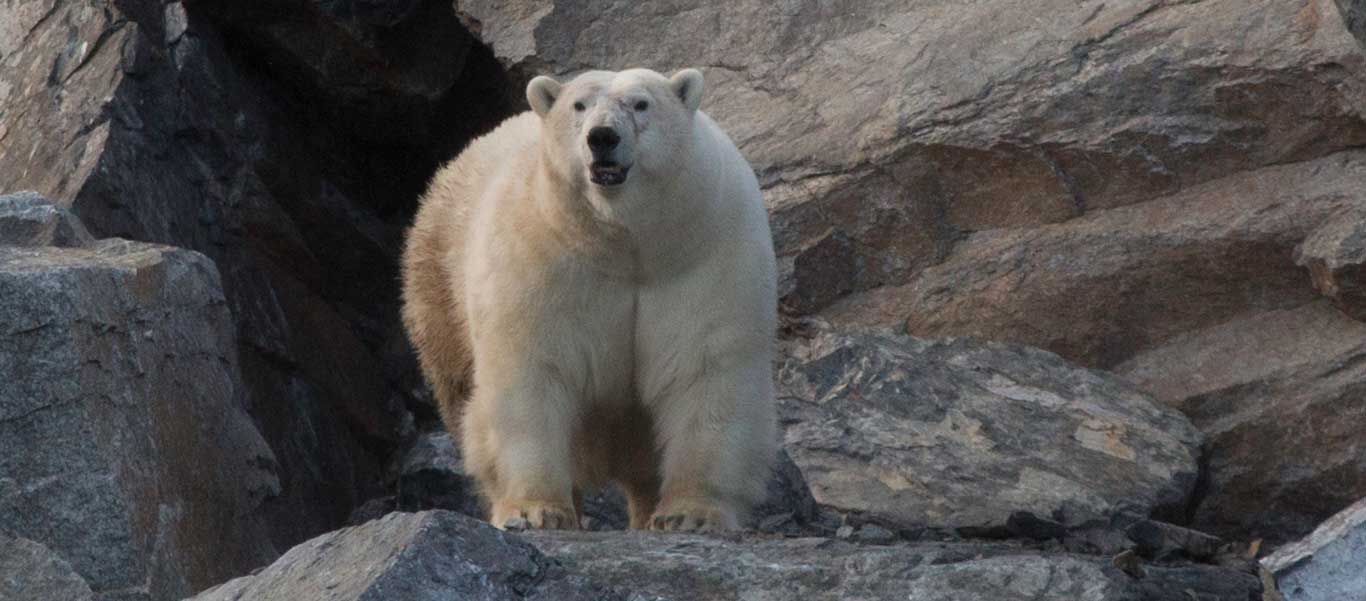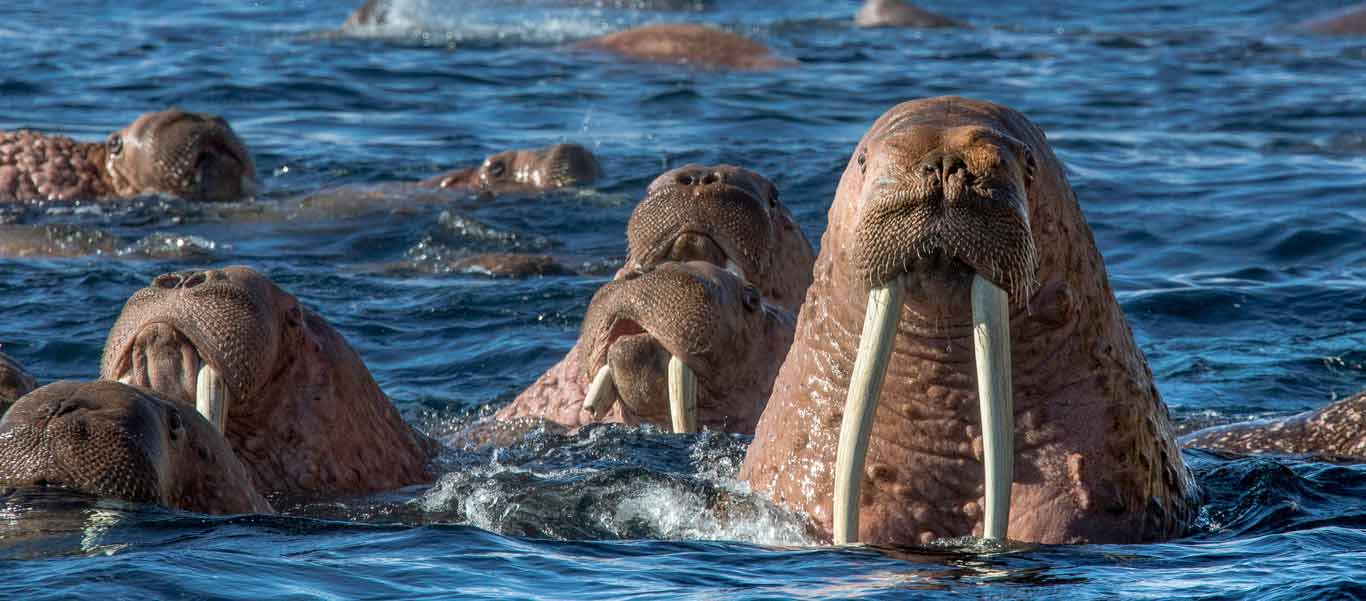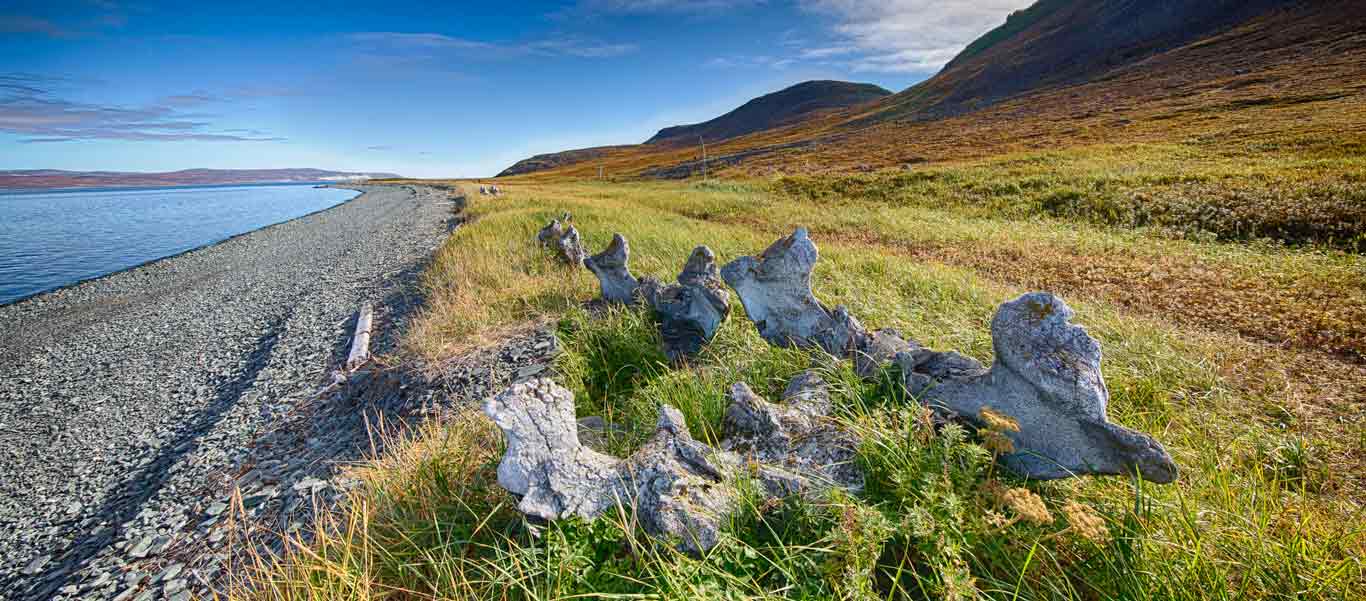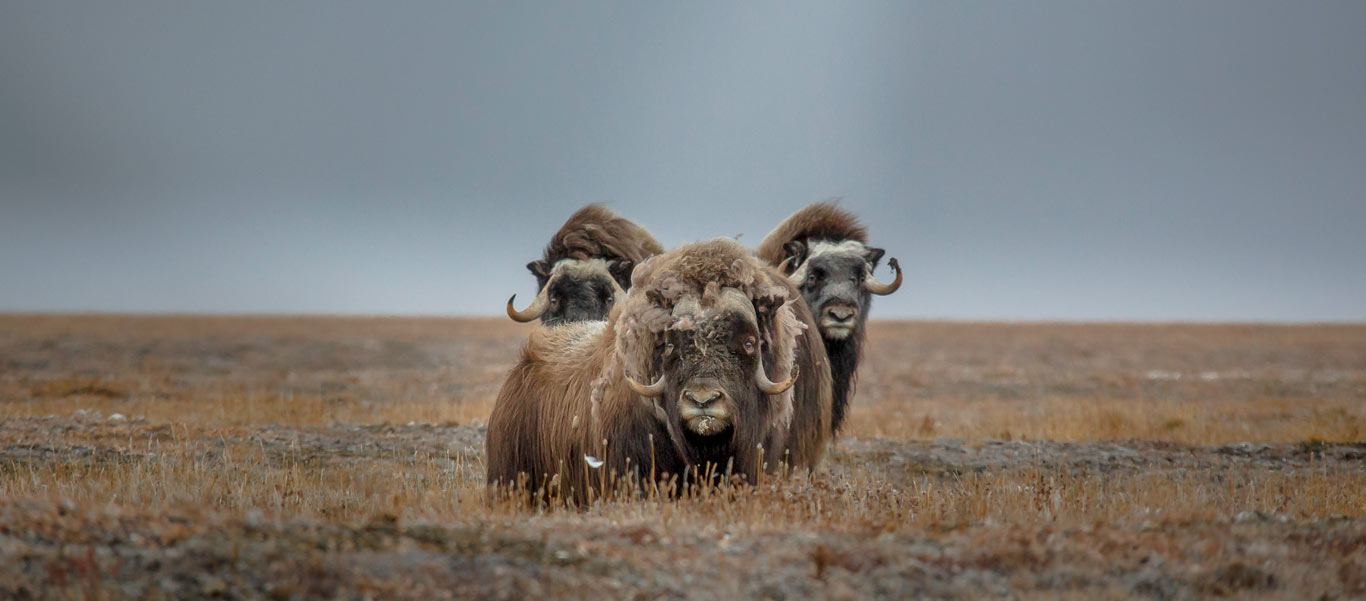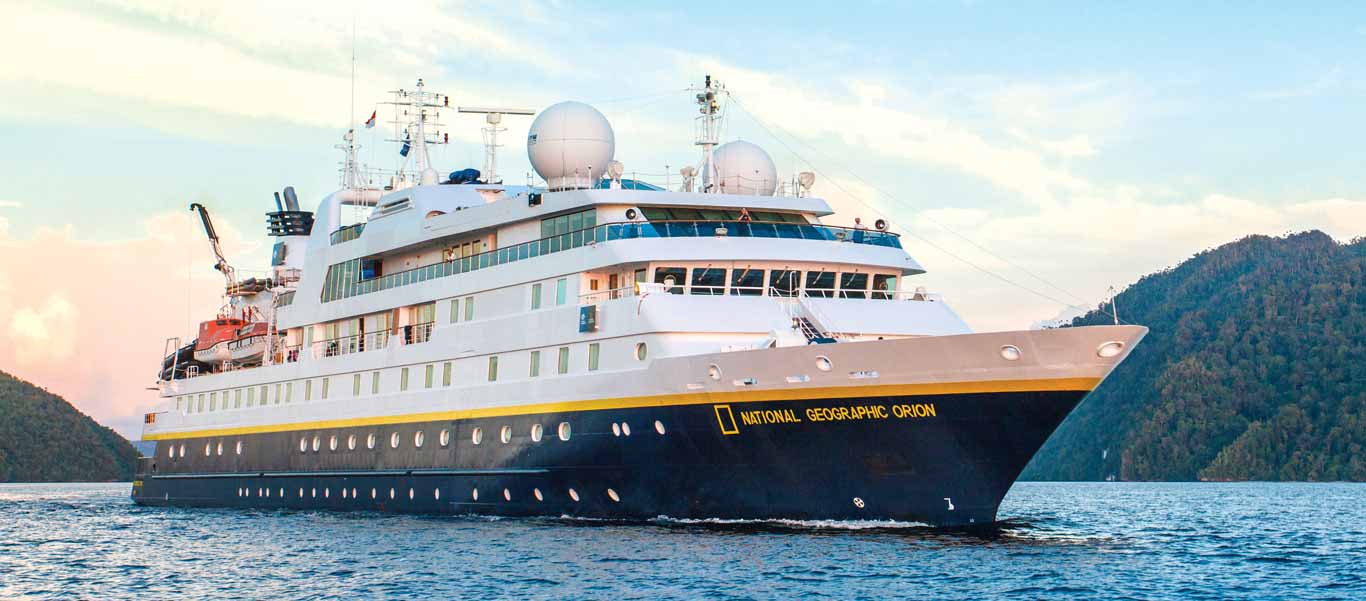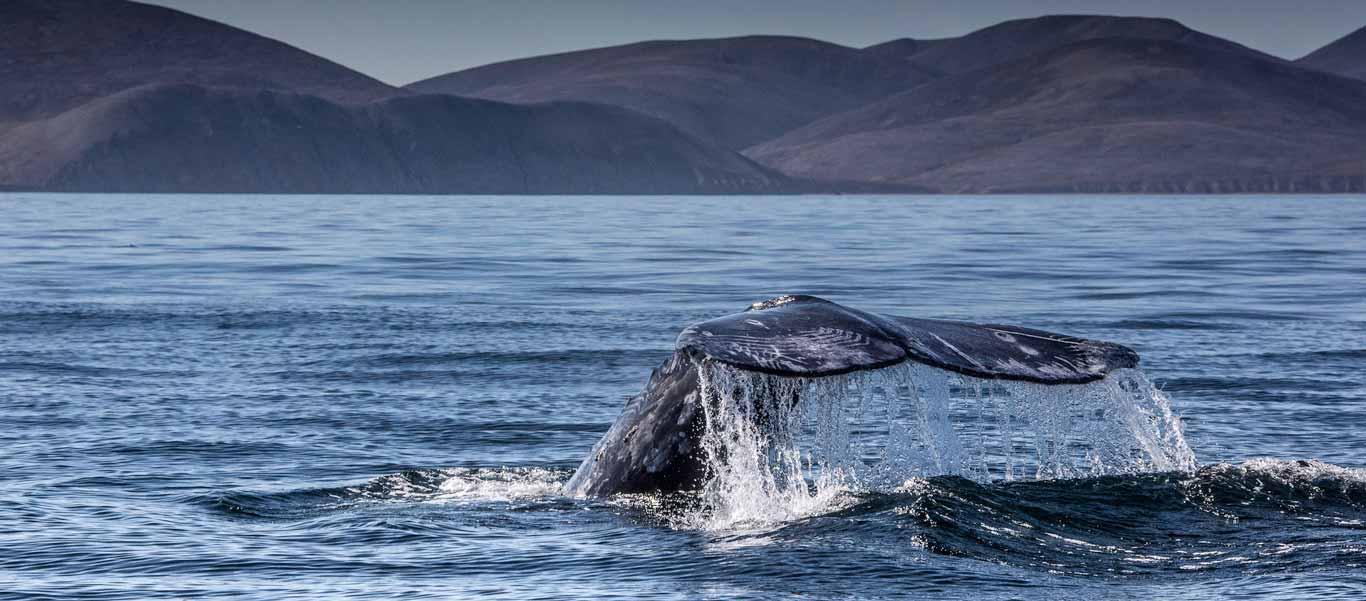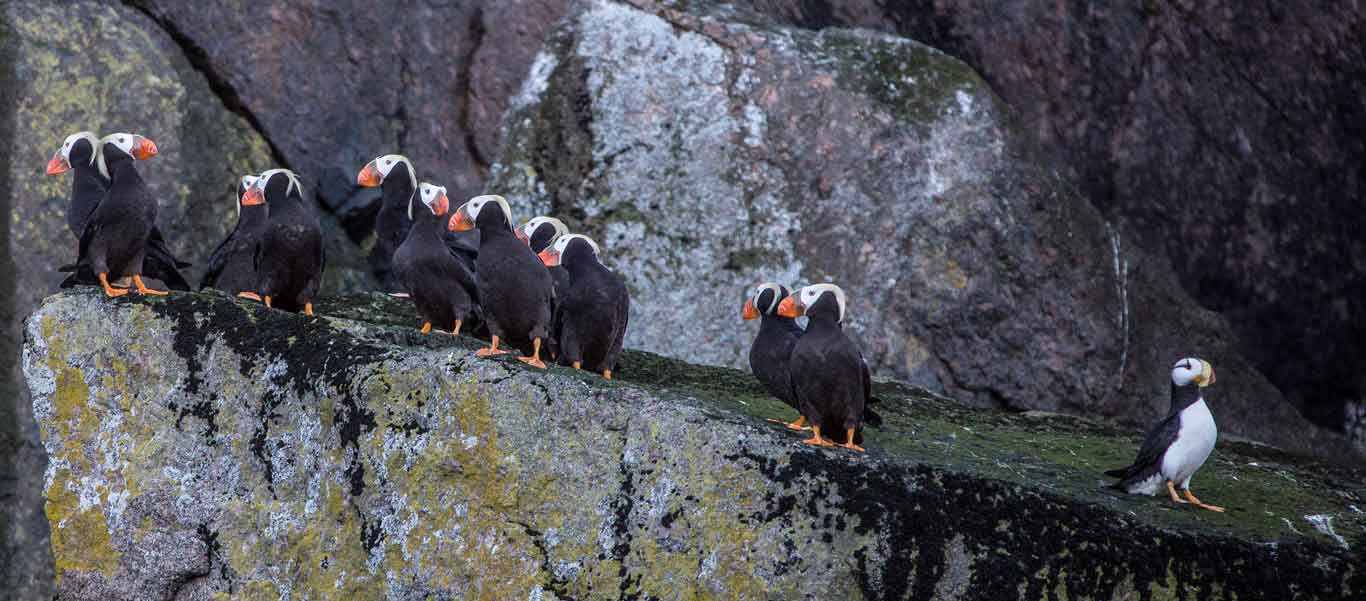Russian Arctic with Wrangel Island
onboard National Geographic Orion
Russian Arctic Cruise with Wrangel Island
Historians call it Beringia, the legendary land bridge that once joined Alaska to Siberia. The bridge gave way some 11,000 years ago, but the islands and peninsulas that remain in the Bering and Chukchi Seas still possess a Pleistocene character, down to the Woolly Mammoth remains that continue to crop up on Wrangel Island. The best way to explore this region is on a Russian Arctic cruise, with Wrangel Island travel among the highlights of this world where wildlife reigns. See Gray Whale pods and Pacific Walrus haul-outs off the Chukchi Peninsula; Emperor Geese and puffins on Kolyuchin Island; and Polar Bears thriving on Wrangel Island. Visit the ancient Yupik ceremonial site known as “Whale Bone Alley” on Yttygran Island, and meet some of the native people who call this strange and unforgiving land home.
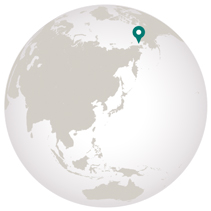
Destinations
- Travel by Air
- Travel by Road
- Travel by Boat
- Travel by Bullet Train
- Travel by Rail
- Travel by Dog Sled
-
Saturday, August 10: Arrive Anchorage
Arrive in Anchorage today and transfer to the Hotel Captain Cook downtown, with soaring views over Cook Inlet to the west and the dramatic Chugach Mountains to the east. Get to know your Apex expedition leaders and fellow travelers at a welcome dinner. Overnight at Hotel Captain Cook.
-
Sunday, August 11: Anchorage / Nome / Embark Orion
After breakfast, transfer to the airport for a flight to Nome, perched on the southwest edge of the Seward Peninsula and overlooking the Bering Sea. Transfer to the pier and embark National Geographic Orion, expertly engineered to navigate rugged coasts beyond the reach of ordinary vessels. Leave your luggage in your cabin, then head up on deck to enjoy the views as you sail into the Bering Sea.
-
Tuesday, August 13: Provideniya, Russian Federation
Cross the International Dateline and lose a day as you head into Russian waters. Spend time on deck watching for seabirds such as Short-tailed Shearwaters, Northern Fulmars, Laysan Albatross and Fork-tailed Storm Petrels. Attend a lecture on the flora and fauna of the Russian Arctic, before arriving in the former Soviet military port of Provideniya, at the southern limit of the Arctic ice pack. This is a technical visit, to conduct clearance into Russia, but you will also have time to visit the city’s regional museum, which boasts some incredible artifacts and clothing collected from local villages. Enjoy a traditional Yupik dance performance before heading back to the Orion and north toward the Bering Strait.
-
Wednesday, August 14: Cape Dezhnev / Uelen Village
Located at the meeting point of the Bering and Chukchi Seas, Cape Dezhnev, named for the Cossack explorer who first rounded the Chukchi Peninsula to claim these shores for Russia in 1648, is the easternmost point on the Eurasian continent. Conditions permitting, head ashore in Zodiacs looking for Gray and Humpback Whales en route, and murres, Black-legged Kittiwakes, cormorants, both Horned and Tufted puffins, White-fronted Geese and Whooper Swans along the cliffs and coastline. With luck, you may even spot evidence of Brown Bear activity in the area. Enjoy a hike to the Dezhnev Lighthouse and take in the sweeping panorama from its base, looking out over the Diomede Islands and on to Alaska if it’s clear. This afternoon, head to the nearby village of Uelen, called “Land’s End” by the local Yupik, known for its exquisite Walrus ivory carving.
-
Thursday, August 15: Kolyuchin Inlet / Kolyuchin Island
On the northern Chukotka coast sits Kolyuchin Inlet, an enormous estuary teeming with waterfowl and migratory waders. Conditions permitting, spend the morning hiking here, searching the strange, desolate landscape for evidence of mammals such as Arctic Fox, Brown Bear or the rare Wolverine, as well as Lemmings. The dunes and tidal areas are home to handsome Emperor Geese and Pacific Loons, while Gray and Humpback (and possibly even Bowhead) Whales are often seen carousing in the surrounding waters. Next, head to nearby Kolyuchin Island, where puffins, guillemots, kittiwakes and gulls nest in great numbers, and Pacific Walrus haul out on nearby rocks. The island also has remnants of an abandoned Chukchi settlement and Russian Polar research station.
-
Friday, August 16: At Sea / Wrangel Island
Spend time on deck, looking for sea birds and cetaceans. Attend lectures by the expedition team as you prepare for your time spent on Wrangel Island. Weather and ocean conditions permitting, arrive in the early evening to pick-up park rangers who will accompany you on each excursion ashore.
-
Saturday, August 17 – Monday, August 19: Wrangel Island
Wrangel Island, located high above the Chukchi Peninsula, is about the same size as Yellowstone and possesses an array of fauna that is equally as impressive. The island escaped glaciation during the last ice age, and now has the highest biodiversity in the High Arctic, with the world’s largest population of Pacific Walrus, the highest density of ancestral Polar Bear dens, prime feeding habitat for Gray Whales and nesting habitat for 100 migratory bird species, including Snow Geese, Snowy Owl, skuas, Arctic Tern, Ross’s, Sabine and Ivory gulls, and Snow Bunting. It was also the last refuge of Woolly Mammoths—they continued to live here for some 6,000 years after they died out on the mainland—and their bones and tusks are occasionally seen jutting out from gravelly riverbeds. Spend three full days exploring this UNESCO World Heritage site by ship, Zodiac and on foot, with the guidance of local rangers. With luck, you will see Polar Bears, Musk Oxen, reindeer, Arctic Fox, and many walrus and whales.
-
Tuesday, August 20: At Sea
Spend the day at sea as you head back toward Cape Dezhnev. Watch for water birds and Humpbacks, Grays and Orcas on deck, attend lectures on the area’s flora and fauna, and the history of exploration in the Russian Arctic.
-
Wednesday, August 21: Lorino Village
Take in some Chukchi culture today at Lorino, the largest indigenous village in Chukotka, with about 1,000 continuous residents. Learn about their marine subsistence, hunting, and reindeer herding—the village maintains a herd of about 4,000 reindeer that circulates among tundra feeding grounds. Witness a traditional dance performance, and peruse handicrafts, such as intricately carved knives and fur-trimmed garments.
-
Thursday, August 22: Yttygran Island / Provideniya
This morning, land at Yttygran Island, home to the strange and stunning ancient Yupik site known as Whale Bone Alley. Discovered in 1976, Whale Bone Alley is thought to be 600 years old, and consists of over a quarter-mile stretch of immense jawbones and ribs of Bowhead Whales, arranged in stunning ceremonial arch formations. Later, continue to Provideniya to conduct your clearance formalities before heading east toward Nome.
-
Friday, August 23: At Sea
Spend one last day at sea, trading photos and stories of the journey with your fellow travelers. Always keep binoculars close at hand, as whales and sea birds are sure to pass by. Celebrate your remarkable voyage this evening at the Captain’s farewell dinner.
-
Friday, August 23: Nome / Homeward
After crossing the International Date Line, and gaining a day, arrive back in the U.S. in Nome, on August 23rd. Enjoy a final breakfast before disembarking, and transferring to the airport for your flights home.

